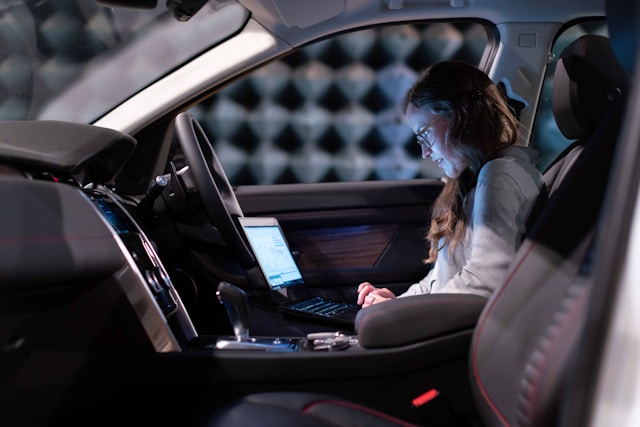Self-driving cars have brought excitement and endless possibilities for the future of transportation. These vehicles are powered by advanced technology designed to navigate roads with little human intervention.
While they’re advertised to reduce accidents, improve efficiency, and provide greater mobility for those unable to drive, they also raise questions of liability when accidents do occur. This question is complex and has yet to be fully explored. Whether the car is an autonomous ride-hailing vehicle or an “autopilot” car that requires a driver behind the wheel, the legal landscape around liability is rapidly changing.
Autopilot Cars with a Human Behind the Wheel
One form of a self-driving car is the “autopilot” car, where the car can assist with driving but still requires a human to be present, paying attention to the road, and ready to take control if necessary. While these cars are capable of handling certain tasks, they still depend on the driver’s vigilance to take over when needed.
In accidents involving these cars, the issue of liability may be considered based on the following:
- Driver Responsibility: While autopilot cars like Tesla models may have automated features, the driver is typically still responsible for monitoring the road and being ready to take control. If an accident occurs because the driver failed to react appropriately or was distracted, they could be held liable.
- Car Manufacturer: If a car’s system fails, the manufacturer of the car could be held responsible. Legal action can be taken against the automaker for any alleged defects.
- Third-Party: In some cases, accidents involving self-driving cars can result due to third-party negligence. Examples of this could include poor road conditions or another driver’s actions. In these instances, traditional liability may apply, and the at-fault driver could be held responsible for the accident.
Self-Driving Cars and Rideshare Services
What about fully self-driving cars such as those we see from rideshare companies like Waymo, Lyft, or Uber? These companies have been testing fully autonomous vehicles in various cities. However, accidents involving self-driving rideshare cars, such as Uber’s self-driving car fatality in 2018, have demonstrated inherent risks and challenges in liability.
In these cases, multiple parties may potentially be at fault:
- Vehicle Manufacturer: If the accident is caused by a malfunction in the car’s systems, the manufacturer of the self-driving car could be held liable. This is especially true if it’s proven the vehicle’s design or programming was at fault.
- Rideshare Company: Rideshare companies may also bear some of the responsibility in an accident. If a company’s safety protocols, maintenance procedures, or practices are found to be lacking, they could be held liable for accidents involving their fleet of self-driving cars.
- Human Safety Driver: In cases like the Uber fatality where there’s still a safety operator or human tester behind the wheel, the driver may also be found at fault if they failed to take control of the vehicle in an emergency.
- Other Drivers: Like any car accident, it is possible that the other driver may be at fault regardless of whether the car involved is self-driving.
Read More: What to Do If You’re in a Rideshare Accident
Key Challenges in Self-Driving Car Accidents
Liability issues when it comes to self-driving car accidents are complicated due to the lack of a clear legal framework and precedence. Because existing laws were not created with self-driving vehicles in mind, they must be interpreted in a way that applies to new technologies. Some challenges include:
- Insurance: Self-driving car insurance policies are still being developed and adapted, but there is an ongoing debate on whether liability insurance should cover the manufacturer, the rideshare companies, or the human operator.
- State and Federal Regulations: Different states in the U.S. are taking different approaches to regulating self-driving cars. California, for example, has been at the forefront of legislation while other states have been slower to adopt clear regulations. These inconsistencies can complicate legal cases especially when a car crosses state lines or operates in a state with less developed regulations.
- Determining Fault: Because self-driving cars utilize complex algorithms to operate, it can be difficult to determine exactly where the fault lies when an accident occurs. Was it the car that made the wrong move or was it an external factor that came into play?
Learn more about the percentage of car accidents caused by driver error
Trust the DM Injury Law Team to Fight for the Compensation You Deserve
Liability in self-driving car accidents is still evolving, and clearer regulations may emerge in the future. DM Injury Law works to stay at the forefront of personal injury claims and will work tirelessly to defend victims of accidents. If you’ve been injured in a car accident, reach out to our legal team for a free consultation. With over 100 years of collective experience, we’re dedicated to our clients and helping them on their journey towards recovery.




